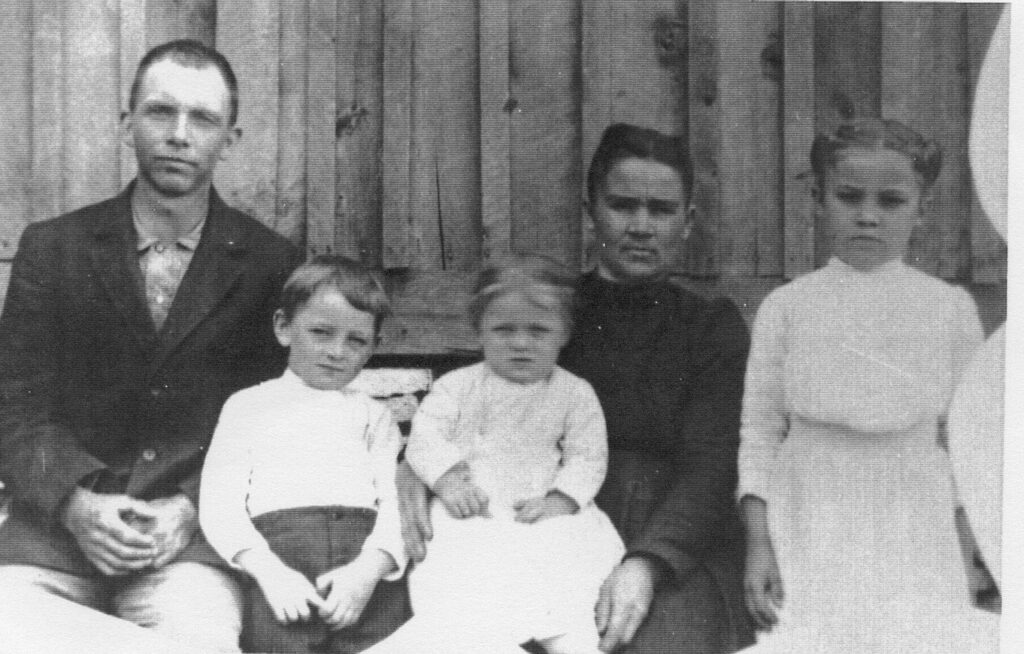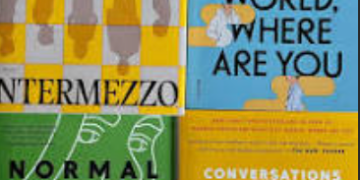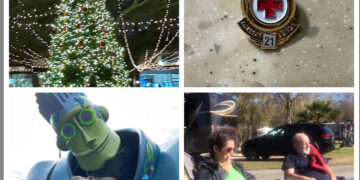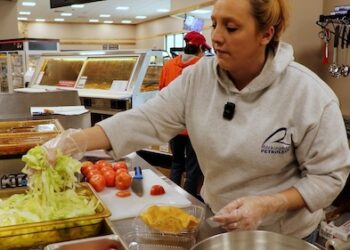Note: Charlotte Yankey Crider (1927-2016) wrote the following stories about her grandparents Michael and Lavina Thomas who lived on the Shenandoah Mountain.
The best days of my childhood were spent visiting in this humble mountain cabin [of my grandparents on the Shenandoah Mountain]. Their lifestyle was typical homesteading at its best. They were Michael and Lavina Siever Thomas. Michael’s grandfather Jacob came from Germany, married in Holsinger town, now Broadway, Virginia, where his father Daniel was born. When Daniel married Mary Ann Ritchey, he decided to homestead on Shenandoah Mountain. Daniel built a small log cabin beside a flowing spring of water, down between two big hills. Here my grandfather Michael was born.
The family that I knew living there was my grandfather, grandmother, great-aunt Rebecca, her son Daniel, an uncle Benjamin and aunt Nellie. They were a plain, happy family with great ambition to survive. They had added three more rooms, porches, and a big pantry to this log structure.
As you approached this home, hound dogs, their hunting dogs, would bark. Then you would see loving faces, peering with hands sheltering the glare of light, looking up the hills to see whom the dogs had warned was coming. Company was always welcome.

I loved this place; it was always so peaceable and quiet. These were the days when life seemed less hurried. You would go to bed early and awake early, with the roosters crowing loudly. Breakfast never smelled better anywhere. The aroma of coffee perking and bacon frying made you jump right out of bed. Downstairs on the back of the wood cook stove were stacks of buckwheat cakes as big as plates. These we ate with butter, bacon drippings and maple syrup. Everyone ate a hearty breakfast. They bought brown sugar in a 100 lb. bag. I sure enjoyed the sugar lumps they would give me. It was like having candy. Another favorite food was grandma’s home baked fresh rye bread; no one could make it like her. On it we would put homemade butter from the springhouse.
The springhouse was one of the most fascinating places to me. The water flowed from beneath it. It was built up, with flagstone rocks to a good six feet tall, with a roof over it. A birch tree shaded it. The spring flowed into another much larger building running all the way through and outside down to a watering trough hued out of a big log for animals to drink. Inside this building you could step down onto a log step to place crocks of milk and food into this cool flowing water. Each container was covered with a flagstone rock, which had been hued to an octagon shape. This weighted down the jar to keep it from floating.
One side of the building held big wooden barrels of meat cured in salt brine. On a shelf were crocks of honey, peach, pear and apple butter with heavy covers tied on.
Outside was a shed-like structure attached to the same building where the family wash was done in big wooden tubs. This building had benches built around its sides, where you could place the tubs, one to scrub the clothes in, two others to rinse them in.
In the back was a rocked wall structure where three big iron kettles hung to heat the wash water and to boil the clothing in. I never remembered seeing a clothes line. They hung the clothes and bedding on a crude picket fence that was around the house and garden.
Climbing the pathway to the house you stepped up over roots from the biggest black cherry tree that I ever saw. Cherry trees grew in abundance then. They had red, black, and yellow trees. The path led by the vegetable garden, where a big bed of ginseng was growing with clusters of red berries. This plant was hunted in the mountain forests for its roots. The roots were dried and sold for medical purposes. The money received could be used for needed supplies. I remember my great-aunt saying she wanted a string of glass beads when she was a young girl. She hunted and dried enough ginseng to purchase them and a pair of new shoes.
A flight of steps led to the back porch which was high off the ground. On the porch was a long narrow table, where rows of water buckets sat. Also, a metal pan with a big bar of soap and two metal wash pans. Everyone drank from the same water dipper that was kept in the bucket. No one thought of germs then. The water was ice cold when first drawn from the mountain spring.
Next month—porches, fields, and church.
































